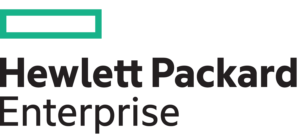Are you currently using a company-supplied smart device? You may want to get used to providing your own smartphone. By 2016, 40% of companies will no longer even offer smart devices to their  employees, relying exclusively on employees providing their own smartphones (Gartner). But in 2015, if you’re not already using your own mobile device for work purposes (called BYOD – Bring Your Own Device), you’re turning into a minority. It’s estimated that 90% of employees use their personal smartphones for some form of work. So, is BYOD good news or bad news?
employees, relying exclusively on employees providing their own smartphones (Gartner). But in 2015, if you’re not already using your own mobile device for work purposes (called BYOD – Bring Your Own Device), you’re turning into a minority. It’s estimated that 90% of employees use their personal smartphones for some form of work. So, is BYOD good news or bad news?
Mostly good. Using one device means you don’t have to lug around two pieces of technology, keeping an eye on each for incoming calls, emails and texts. If you already find it a pain to keep one phone on you at all times to keep in touch, try fitting an extra iPhone in your pocket for all of your business emails and calls.
Though using a phone that has been provided to you by your employer means you don’t have to worry about data usage, rollover minutes, etc., it can be cumbersome. When I used an employer-provided phone, it usually ended up left in my bag at the end of the day, meaning I still missed emails and calls that came in after the workday ended, which is one of the things having the device was supposed to prevent. Especially when telecommuting, leaving your work phone behind because you’re not used to carrying two phones can lead to trouble.
Having a phone with dual business/personal use means you can use a device that you’re most comfortable with to stay up-to-date on all of your work duties regardless of where you are. You can respond to emails and answer phone calls on your couch watching television, during dates and even while vacationing on a beach. The downside? Did you read the part about responding to emails and answering phone calls on your couch, during dates and at the beach? It’s a serious commitment.
 Personally, I sleep with my iPhone under my pillow at night and consider it an adult version of a stuffed animal. The security of having all of the information I could ever possibly need just inches away from my slumbering self assures me a good nights’ rest. However, if I wake up at 2am, my inner employee immediately shouts “Check your email! There might be an emergency!” Of course, this is great for my employer…not so great for my husband who isn’t so technologically addicted.
Personally, I sleep with my iPhone under my pillow at night and consider it an adult version of a stuffed animal. The security of having all of the information I could ever possibly need just inches away from my slumbering self assures me a good nights’ rest. However, if I wake up at 2am, my inner employee immediately shouts “Check your email! There might be an emergency!” Of course, this is great for my employer…not so great for my husband who isn’t so technologically addicted.
BEWARE: Using one device for personal and professional purposes can be tricky – it’s not unheard of for someone to accidentally post a personal update to a company’s social media account or send a business-related email from a personal email address (sending a business proposal from [email protected] will probably not endear yourself to a potential customer).
Don’t forget – in most cases you’re using your OWN data, minutes and text plan, so overages are your responsibility. Depending on the amount you plan to use your device for business, you may want to look into upgrading your plan to something that will fit the increased usage.
If you’re an employer looking to introduce BYOD to your employees, check back for our next blog on understanding the benefits of BYOD and how to implement a company BYOD policy correctly.





